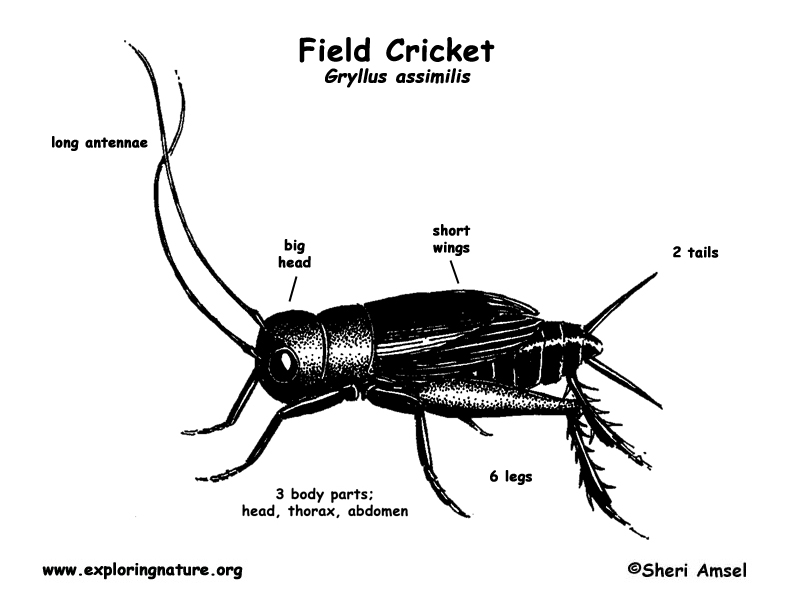

Throughout much of North America and Europe.
They live in fields, yards and can come into houses in late summer.
They are brown, with a big head, short wings and two long “tails.”
They are active at night (nocturnal) making a loud, trilling song. Their song slows down when it gets cooler. There is a formula where you can count cricket chirps and tell the exact air temperature. It goes like this: Count the number of cricket chirps in 15 seconds, then add 40. This is the air temperature at F.
They eat plants and insects.
Females lay 50 to 400 eggs in damp soil. They hatch the next spring. Only the eggs survive over the winter.
Kingdom: Animalia
Phylum: Arthropoda
Class: Insecta
Order: Orthoptera
Family: Gryllidae
Genus: Gryllus
Species: assimilis
When you research information you must cite the reference. Citing for websites is different from citing from books, magazines and periodicals. The style of citing shown here is from the MLA Style Citations (Modern Language Association).
When citing a WEBSITE the general format is as follows.
Author Last Name, First Name(s). "Title: Subtitle of Part of Web Page, if appropriate." Title: Subtitle: Section of Page if appropriate. Sponsoring/Publishing Agency, If Given. Additional significant descriptive information. Date of Electronic Publication or other Date, such as Last Updated. Day Month Year of access < URL >.
Amsel, Sheri. "Cricket (Field)" Exploring Nature Educational Resource ©2005-2024. December 17, 2024
< http://www.exploringnature.org/db/view/275 >

